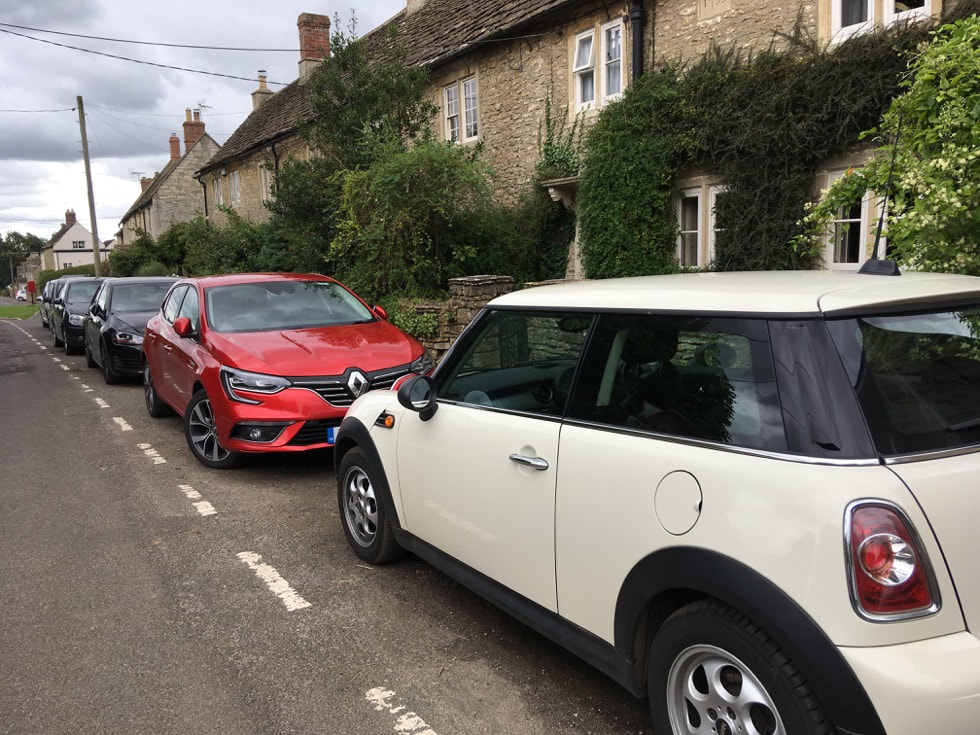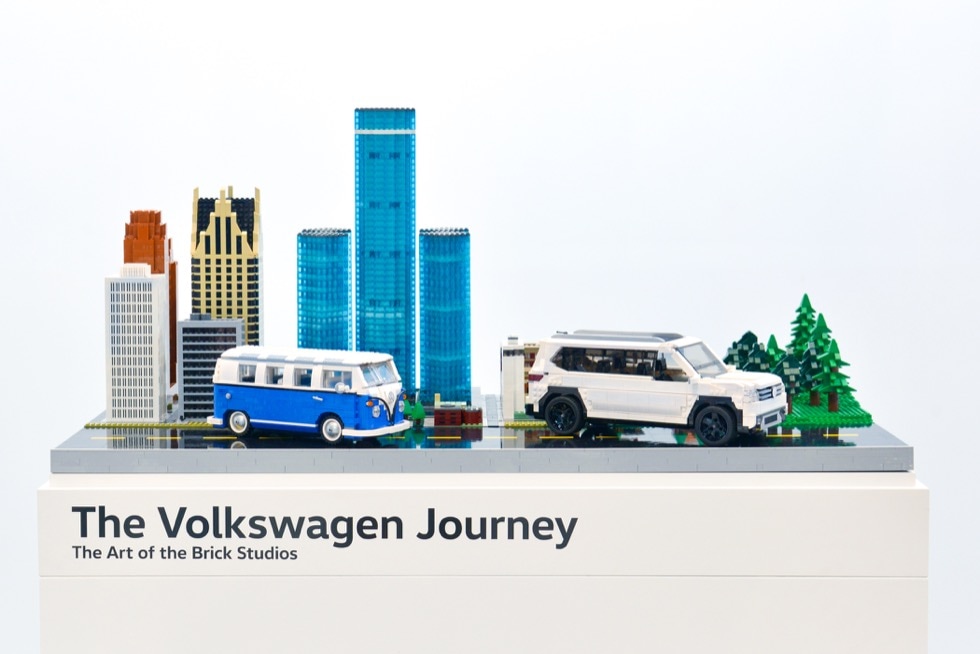| I wasn’t at all surprised to read in a survey by car leasing firm OSV that parking causes 76% of rifts with neighbours in the UK. Of a survey of 1005 people:
I’ve had a few rifts with neighbours who’ve regularly blocked my drive, or taken the big space rather than an available small one for their supermini when they knew I had a 1941 Chevrolet. When I worked for a housing association, the neighbourhood officers reported that parking arguments were one of the main causes of anti-social behaviour. If someone drives home from work, steaming after a bad day, their stress level multiplies many times if they can’t park. I’ve even known a few people move because this happened regularly, and off-street parking now makes a house more attractive to buyers. Of course the situation is getting worse as every member of a family old enough to drive will want their own car. And what will happen when everyone needs not only a parking space, but access to their electric vehicle charging point? OSV is suggesting that councils invest in neighbourhood parking schemes. Personally, I believe that lack of parking spaces will become a another good reason simply not to own or even lease a car. I can easily see a future where we just go online and order an autonomous car to pitch up when we need one. And, much as I love driving, there are days when I wish I could do that now. For more about OSV click here |
|
0 Comments
 A survey by Renault has found that the car has become a quiet sanctuary where parents and kids can really talk. I don’t know how my Mum would have reacted to me asking about the birds and the bees while she negotiated a roundabout. (8% of those surveyed said kids wanted the ‘sex chat’). I can only guess because my mum took me on the back of her bicycle, and my only question was can we walk please? I suspect, however, that we wouldn’t have got to school on time. These days, the study found, that the family car is becoming a travelling confessional with more than half (54%) of the 2,000 people surveyed said their kids are more likely to open up about topics such as what happened at school and trouble with friends when mum or dad is behind the wheel. One in 10 (9%) of the parents surveyed said they deliberately go on a car journey in a desperate bid to get their child to talk more. 28% of parents said they learned more about their children in the car than at home. It’s a little sad that parents and kids are not finding time to talk at home, probably because of the simple chaos of feeding them, washing their clothes, or making sure they have the right ingredients or costume for a school project. How many times has a colleague around you glanced at their phone and yelled shi-i-i-t because some smug mum has put up a picture of their kid dressed as a panda, and they’d forgotten it was World Dress as a Panda to School day? When you ask a child directly, how was school? You’re likely to get a grunt, or "It was OK" and you can’t just sit around hoping they will decide to open up. There’s also the ‘helicopter parent’ syndrome where children take a phone to school and call their mother at work when their friends have suddenly decided to shun them. A hard choice for mum to help her distressed child or get that important pitch for a new client finished. Driving is a neutral time. You’re busy in that getting to somewhere, and you do have to concentrate on the road, but to a child, you’re sitting with them and quiet, it’s precious time. It’s an opportunity to share their music, hear their latest joke, and maybe answer their questions about sex, with no chance someone if going to walk into the room. So if you need tour child to talk, maybe take them for a drive. See the full results of the survey on Renault’s website here. I photographed this majestic 1970 Mercury Colony Park Station Wagon on the Classic American stand at the Lancaster Insurance Classic Motor Show at the NEC a little while ago - and I had difficulty getting back far enough to get all of it in. Its owner, Gary Lucas, has just got in touch, letting me know it now has its own website. (See below.)
I love this car because it’s so unapologetic. It just goes “Ta-da! I’m here, move up there, make space!” It comes from a time when people genuinely didn’t know about climate change and didn’t have to worry squeezing into a tight parking slot. Back then it wasn’t an excessive purchase. It’s 18.5ft long – but then so were all the other American station wagons from the 1950s on (and, guess, what, the 2017 Lincoln Navigator L still is). Power under that football field of a hood came from a 429cu in V8, and Gary quotes the mpg as ‘Don’t ask’. In 1970, you didn’t need to. Gas was around 36c a gallon. But perhaps the best thing about this piece of mechanical excess is that it’s not an executive chariot, it’s a car for an aspiring middle class family to enjoy and be proud of. Mercury is a bit posher than Ford, not demanding a round of applause like Cadillac or Lincoln. It’s a ‘nice’ marque for people who’ve done quite well – like a pre-Honda Rover. The Colony Park name was used for top-of-the–line wagons from 1957 to 1991. We Brits love an estate or a shooting brake, but in the States these days, people want SUVs. Station wagons were what mom, or even gran used to drive, and sure enough, the first owner of this Mercury was Carolyn M Gaunt of Fresno, CA. I imagine her choosing it and driving off, thrilled her Mercury, just as I was thrilled with my more humble Mercury Marquis sedan. Her neighbours would have admired its revolving lights, diamond-pattern vinyl upholstery and Rich Yacht Decking vinyl wrap ‘woody’ trim. They may have said something like “Gee, that’s really neat!” She really must have loved it, too, because this car is immaculate. No football cleats have scored the carpet; no dogs have scuffed the load area. When I spotted it at the NEC, I couldn’t stop walking round it looking at the flawless paintwork, and the perfect condition of that ‘wood’. Sadly, it wouldn’t have held its value after the fuel crisis hit in 1973, so the best thing to do would have been to hold on to it. Now it’s a priceless snapshot of a more optimistic time. Gary loves it and is giving people the opportunity to admire it again. They probably won’t say “how neat!”. They’re more likely to say “Wow!” or “WTF” but in a nice way. See Gary's My Wagon website here. The wagon was also featured in Classic American magazine March 2015
Expert tips provided by Anna from Sell Your Motorbike
There are plenty of avenues you can take when you need to sell your motorbike, and going online is certainly effective. Here are seven steps to a successful sale. 1. Clean your bike It seems so obvious; however, the number of people that offer their motorbikes for sale covered in filth is surprising. In addition to a general cleanup, it is very important to clean areas (such as under the seat) where tell-tale dust and mud can deter keen potential buyers. You should also see to it that any surface rust from metal or chrome parts is washed off and that battery terminals do not have any calcium-build. 2. Remove most of the accessories You may like the way you’ve pimped up your motorbike, but not everybody will. You may, in fact, get more when you individually sell its accessories online than it would add to the price of your bike. Performance accessories can reduce the price of the motorbike because it looks as if it’s been thrashed. If you want to sell it with the accessories included, ensure the original parts (e.g. mirrors, bars, exhaust pipes, and racks) are included as well. 3. Mechanical condition Don’t start the motorbike just before a potential buyer arrives to look at it. They may be suspicious about the bike’s ability to perform when they feel the warm engine. But, if you have a lot of time for it to cool down again, it is advisable to start it and perform another final battery check. 4. Research the price Visit reputable websites on the internet to find out what the bike is currently worth. Although some online motorbike sales websites offer puffed up views of what people are looking for, a majority of them are often realistic. Quoting a high price on your bike hoping to negotiate a lower price just deters inquiries from potential buyers. It is, therefore, best to quote an honest and fair market price by visiting several motorbikes valuation company websites. 5. A picture says a thousand words One thing to keep in mind is that your online classified has to fight for people’s attention, as it gets bumped down continuously by newer ads. If someone is not searching for precisely what you are selling, they might never see it. You are going to require some good photos of your motorbike for an online ad. Take clear photos of the motorbike against a clear, visible background. A closed garage door is one of the best locations for the photographs. The photos should be taken on a clear day, mid-afternoon or mid-morning and using flash to rid of shadows. Photograph the bike from all sides, and you might want to draw attention to some of the key selling points such as rego sticker indicating plenty of time left or the odometer indicating low kilometers. If you have owned up to any dents or scratches, photograph them, because the potential buyers might imagine them to be worse than you pointed out. 6. Sell Your Motorbike Online on Craigslist or EBay Everyone knows eBay and Craigslist: they are the best places for online ads. Listing your motorbike on any of these sites is quick, free and easy. Upload the photos you took of your motorbike, write a clear description and it will be listed online within seconds. Getting the most out of your motorbike is once again the greatest concern here. Those who browse Craigslist and eBay as well as host of other similar sites are diverse, and range from experts, to complete knobs, to enthusiasts. Always be wary of scammers when selling online. There are people who will spam your e-mail with bogus offers for your motorbike in some of these sites. The most important thing when meeting and dealing with people you don’t know on the internet is to ensure transactions are secure and safe. There are special areas set aside for such transactions in a majority of police stations today. 7. Transfer Documents Have the motorbike transfer documents ready when a buyer shows up. You don’t want to turn a prospective buyer away just because you cannot complete the transaction for lack of documentation. They may never return if they get cold feet!
|
Woman Driver
This blog is by a woman driver, for everyone to read Archives
December 2019
Categories
All
|














 RSS Feed
RSS Feed
